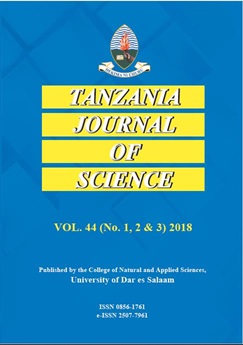Preparation, characterisation and application of molecularly imprinted polymers for the selective removal of sterols from water
Abstract
Water quality of the existing freshwater bodies in many countries has declined due to day-to-day human activities which result into discharging different pollutants. This study therefore, aimed at developing a selective technique based on Molecularly Imprinted Polymers (MIPs) for the removal of toxic sterols from water.
Cholesterol-Molecularly imprinted polymers and their corresponding Non-imprinted Polymers (NIPs) were prepared using a non-covalent method and their physical morphologies were characterised using Scanning Electron Microscope (SEM), Fourier-Transform Infrared spectroscopy (FT-IR) and surface analyzer [Brunauer €“Emmett €“Teller (BET)].
The surface area obtained after optimization of the necessary parameters was 180.26 m2/g for MIP and 132. 18 m2/g for the corresponding NIP at a 1:8 template to monomer ratio. The FT-IR spectra of MIP and NIP were similar indicating the similarity in the backbone structure. The TGA profiles of the imprinted and non-imprinted polymers showed that polymers were thermally stable up to about 250 °C. However, thermal stability was observed to vary with monomer to template ratios. In terms of binding capacity, MIPs were observed to have higher binding capacity of sterols as compared to their corresponding NIPs, and they were able to remove more than 98% of sterols from aqueous solution prepared at an optimal initial concentration of 40 mg/L.
Keywords: Molecularly imprinted polymers, Sterols, water quality, GCxGC-TOFMS. toxic plant extractives


